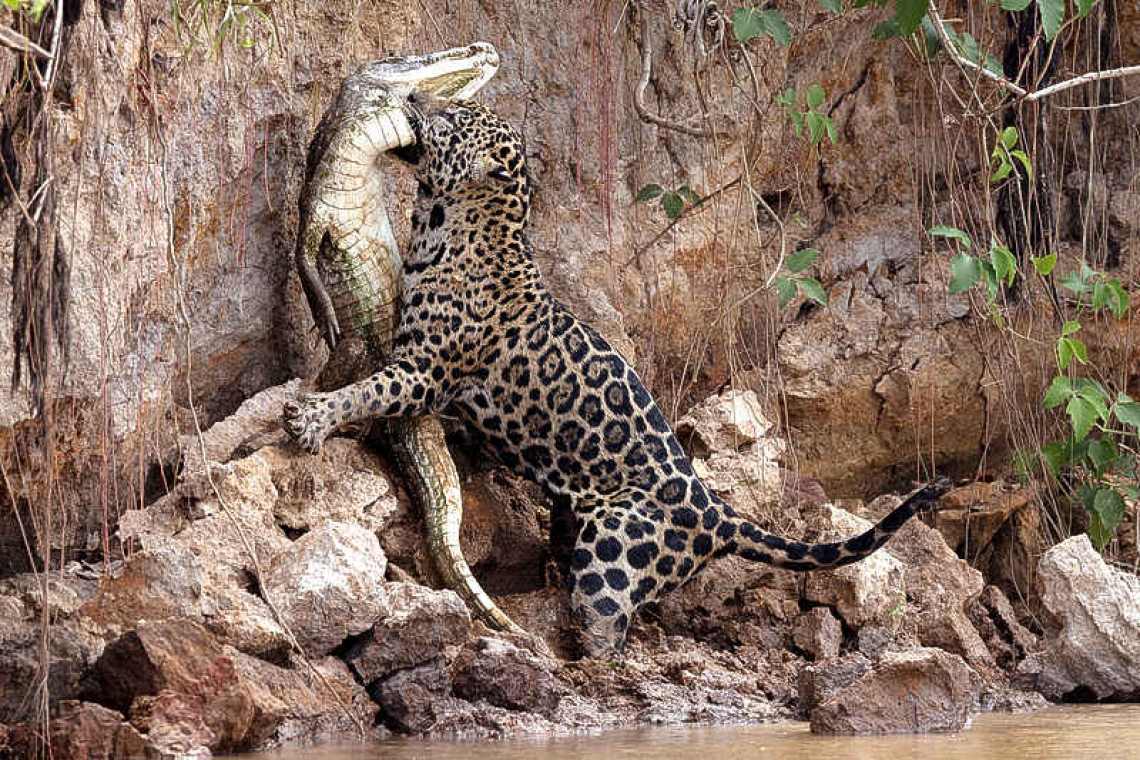PORTO JOFRE, Brazil--They call him Bold and he is Brazil's most famous jaguar, seen on social media diving into rivers to capture a caiman and wrestle his prey ashore.
Bold and his fellow jaguars are surviving the worst fires to engulf the world's largest tropical wetlands in central-western Brazil, the Pantanal. Unlike other animals trapped and burnt to death, jaguars know how to seek refuge on the banks of rivers where food is available in the caimans and capybaras they hunt.
Bold, or Ousado in Portuguese, survived a devastating fire in 2020 when he was rescued with second degree burns to his paws, flown by helicopter to a rehabilitation center and returned to the wild one month later."He is doing very well, super healthy and hunting every day," said wildlife ecologist Abbie Martin, head of the Jaguar ID Project, a non-profit group.
"He has been through so much. I tell tourists 'If you see him, give him a round of applause," Martin said by telephone.
So far this year, more than 16% of the Pantanal has burned, roughly 25,000 square km (9,650 sq miles), an area about the size of the U.S. state of Maryland.While their biome is drying up and being burned down, turning into a cemetery for monkeys, birds, snakes and tapirs, the jaguar population has increased in recent years, according to Martin, a New Yorker who has studied Brazil's largest feline for more than a decade.
The male jaguar population may be stable but the number of females and cubs is growing in the state park Encontro das Aguas, a refuge where four rivers meet near Porto Jofre in the state of Mato Grosso."In 2021, the year after the mega fires, we saw 17 females with their cubs in the park, where prey is abundant and there are plenty of males to mate with," said Martin, whose team registers 90-120 different jaguars each year and estimates their population in the park at around 1,670.
"Last year we saw 21 new cubs," she said.
The Jaguar is the third biggest cat in the world, after the tiger and the lion, and the largest in the Americas. They grow up to 170 cm (67 inches) long, not including their impressive tails that can be up to 80 cm (31.5 inches).
Males can weigh up to 150 kg (330 pounds), but size varies between regions. Jaguars in the Amazon are more numerous but smaller than the Pantanal ones that need bulk to overcome big prey like a caiman.The future for jaguars depends on the rivers that are their last refuge, safety buffers that could disappear if water levels drop in droughts or dams are built, Martin highlighted.
Cristina Gianni, who heads the NEX rehabilitation center for jaguars where Bold received stem cell treatment for his burns, said the Pantanal is under threat from deforestation by cattle ranchers as well as constant fires brought by climate change.She was happy to see Bold has become a common sight for Pantanal visitors, easily identified by a leather collar he still has from his rescue four years ago. "He is hunting like never before," she said.







